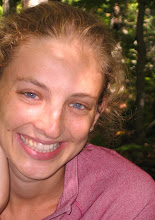 Lawrence Weiner’s 40 year retrospective at the Whitney Museum of Contemporary Art provides the perfect occasion to do some research on the fundaments of conceptual art, its rejection of form and the characteristic questioning of the materials of art. For the most part, the exhibition showcases an array of Weiner’s short sentences, printed in different sizes, colors, fonts and materials, and applied to the walls of the whole fourth floor of the gallery. Entering the show feels like entering a firework spectacle of words, letters and symbols, the exhibition containing nearly 120 works in a space with a surface area increased by additional division walls. Many of the sentences sound like descriptions of a work, as Stretched as Tightly as Possible/ (Satin) & (Petroleum Jelly), written in block letters made of black vinyl. Others are more enigmatic fragments, while others yet are explicit art manifestos. How to make sense of this assortment of words? What is Weiner doing with language and art?
Lawrence Weiner’s 40 year retrospective at the Whitney Museum of Contemporary Art provides the perfect occasion to do some research on the fundaments of conceptual art, its rejection of form and the characteristic questioning of the materials of art. For the most part, the exhibition showcases an array of Weiner’s short sentences, printed in different sizes, colors, fonts and materials, and applied to the walls of the whole fourth floor of the gallery. Entering the show feels like entering a firework spectacle of words, letters and symbols, the exhibition containing nearly 120 works in a space with a surface area increased by additional division walls. Many of the sentences sound like descriptions of a work, as Stretched as Tightly as Possible/ (Satin) & (Petroleum Jelly), written in block letters made of black vinyl. Others are more enigmatic fragments, while others yet are explicit art manifestos. How to make sense of this assortment of words? What is Weiner doing with language and art?Coherently with the assumptions of conceptual art, Weiner’s work does not focus on representation, where a work should be understood in its objective, but rather focuses on the concepts behind making art. Weiner, who began as a sculptor, working with real objects, eventually turned to language as a material through which to express the idea or content behind his work. In Declaration of Intent (1968), a manifesto regarding the making of art on display at the Whitney, Weiner states that: "1. The artist may construct the piece. 2. The piece may be fabricated. 3. The piece need not be built. Each being equal and consistent with the intent of the artist the decision as to condition rests with the receiver upon the occasion of receivership." In this declaration, we find Weiner’s egalitarian focus in the way his works should be received: works made of language, accessible to a wide public, open to many interpretations. Weiner’s work exists in its relationship to the receiver, and it acknowledges that relationship as a principal concept behind the creation of a piece.
The title of the Whitney retrospective, “AS FAR AS THE EYE CAN SEE,” seems coherent with Weiner’s conceptual framework of subjective interpretation and accessibility to art, placing the visitor’s sight at the center of the exhibit experience. Arguably, however, in the tightly packed space of words and phrases, it feels as though there is little room for the viewer’s own imagination. Maybe due to the nature of a retrospective, which seeks to cover such a wide range of the artist’s works, or to the choices of excited curators, the space in the exhibition feels over crowded and somewhat weighed down by the density of the works. The sentences are too many to be contemplated for long, as the brain curiously moves on to the next word puzzle and has hardly the time to respond to what it just perceived. While the exhibition presents an important collection of Weiner’s works, be prepared for a language overload.
http://whitney.org/weiner/

No comments:
Post a Comment